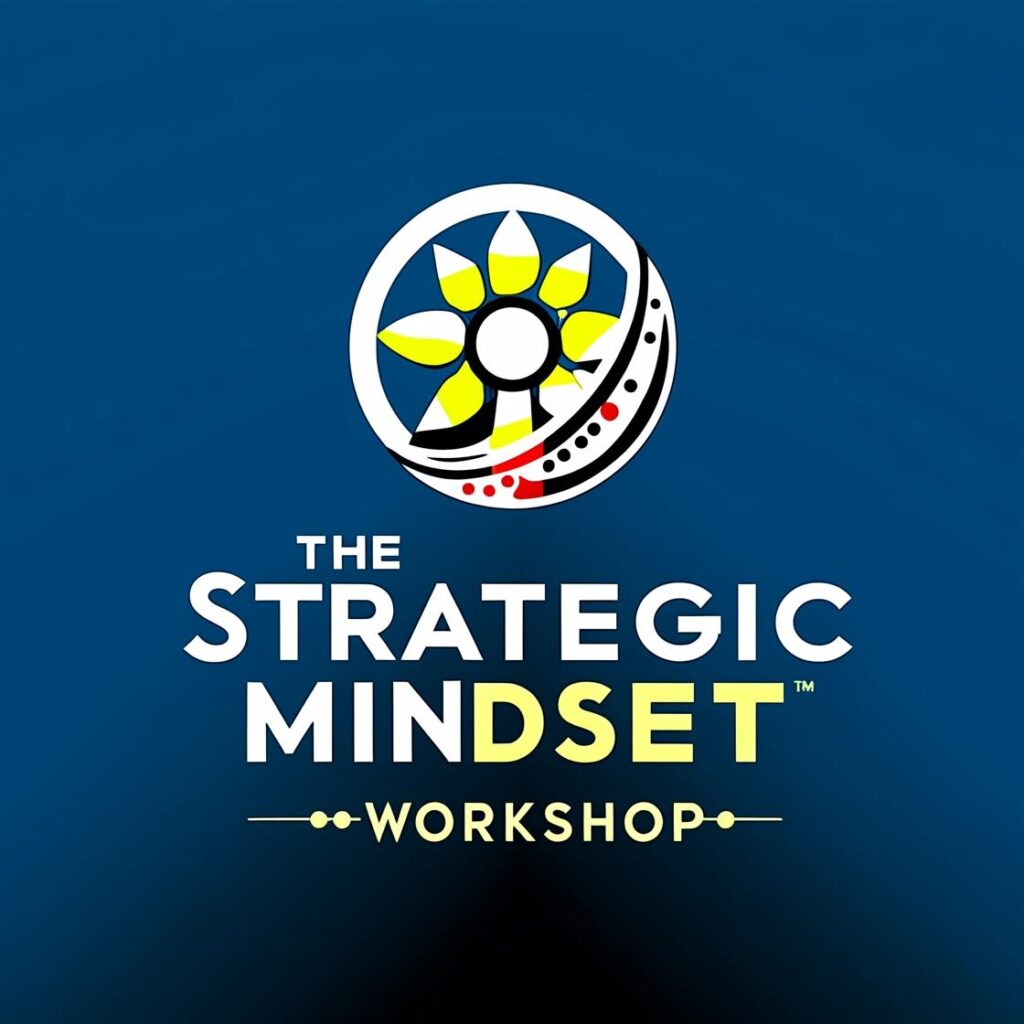The importance of effective training cannot be overstated. It is the engine that drives personal growth, fosters team cohesion, and propels organizations toward their strategic goals.
Yet, in many cases, training is viewed as a mere formality, a box to be ticked, rather than a catalyst for transformation and excellence.
However, it doesn’t have to be this way.
Training can be a powerful tool for change, a pathway to professional excellence if only we learn to train well.
But what does ‘training well’ entail? It involves much more than imparting knowledge or developing skills. It’s about inspiring growth, fostering innovation, and enabling individuals to realize their full potential.
We’ll explore the concept of ‘training well’ and its pivotal role in personal and organizational success. We’ll delve into why continuous learning is crucial, how personal growth and goal setting can turbocharge your progress, and why mastering both soft and technical skills is essential for professional excellence.
We’ll also look at overcoming challenges and staying motivated, the vital role of feedback and networking, and finally, how managers can design training programs that truly work.
This is not just a call to action but a promise of discovery. You’ll uncover strategies, insights, and perspectives that could fundamentally change how you approach training, unlocking a world of untapped potential and unprecedented success.
Welcome to the journey of training well. Prepare to be inspired, challenged, and, above all, transformed.
The Importance of Training Well
Once you stop learning, you start dying. The essence of life is growth, and this is particularly true in our professional lives.
The world is not static; it evolves and changes rapidly, and we must do the same to stay relevant. Professional stagnation is not just a step backward; it’s akin to a death knell in today’s fast-paced, competitive environment.
Training well is an integral part of this growth.
It’s not about the number of hours you spend learning; it’s about the quality of that learning. As author and journalist Malcolm Gladwell popularized, it takes roughly 10,000 hours of practice to achieve mastery in a field.
However, it’s not just practice that makes perfect, it’s ‘effective practice’. Without proper guidance and efficient training methods, these hours can instill not just the right habits but also the wrong ones, making them deeply ingrained and hard to unlearn.
According to a McKinsey Global Institute report, by 2030, about 16% of the global workforce may need to switch occupational categories due to automation and artificial intelligence. This highlights the critical need for effective training and constant skill upgrades.
For organizations, this report serves as a wake-up call to invest more heavily in their human capital, to provide them with the training they need to adapt to changing job roles. This includes not just technical training, but also soft skills that AI cannot replicate.
For individuals, this report is a reminder to take charge of their own professional growth. Staying relevant in the workforce requires a commitment to lifelong learning and adaptability.
Look for opportunities to learn, both within and outside your current job role, and take advantage of training programs offered by your employer.
Remember, your professional growth is ultimately in your own hands.
With these insights, it’s clear that training well is not just beneficial, but crucial for survival in the modern professional landscape. It is our beacon in the journey towards professional excellence, guiding us through the complex maze of evolving skills and technologies.
Personal Growth and Goal Setting
Personal growth and professional excellence are inextricably linked.
The journey toward professional excellence begins with a deep dive into oneself. It involves understanding your strengths, weaknesses, and passions and aligning them with your professional aspirations. This self-awareness is the bedrock upon which we can set clear, ambitious goals.
The concept of ‘Thinking Big’ or ‘Thinking 10x’ plays a pivotal role here. It’s natural to play safe while setting goals, often stemming from a fear of failure or the unknown.
However, if we limit our aspirations, we unwittingly limit our potential. When we dare to aim high, our mind begins to find ways to turn those aspirations into reality.
Let me share a personal story to illustrate this.
For over 30 years, I harbored the dream of writing a book. Every year, I would set a goal to finish it within the year, only to find an excuse to postpone it to the next. This cycle continued until two years ago when I decided to challenge myself. I set what seemed like an ‘impossible’ goal: to write a book in 16 days. To my surprise, I achieved it. What seemed impossible to me was, in fact, achievable.
This experience taught me an invaluable lesson: we are often capable of much more than we think. It’s the audacity of our goals that stretches us beyond our perceived limitations.
The same principle applies to training well. We need not confine ourselves to small, comfortable steps. Instead, let’s challenge ourselves. Let’s dare to dream big, aspire for that challenging job role, to master that complex skill.
By setting ambitious training goals, we catalyze our journey toward professional excellence. We start to train well not just to survive, but to thrive.
Continuous Learning
The concept of continuous learning is central to professional excellence. It’s a philosophy that embraces the idea that we are never too old or too experienced to learn.
It’s an acknowledgment that the world around us is in constant flux and that to stay relevant and competitive, we must adapt and evolve.
I remember a conversation with a manager who believed that ‘an old dog cannot learn new tricks.’ At 45, he felt he had reached a stage in life where learning was no longer necessary. I respect his viewpoint but couldn’t disagree more. I reminded him that even old dogs can learn new tricks when the trainer is good. More importantly, we are not dogs, and I don’t teach tricks.
When I train people, I help them solve problems, find new solutions, and change their lives.
Training well is more than just assimilating new information. It’s about developing new behaviors, changing perspectives, and challenging existing norms. It’s about fostering a mindset that sees challenges as opportunities for learning and growth.
When we commit to continuous learning and train well, we turbocharge our growth. We can accelerate our growth by 10x, and multiply our results by 10x.
Imagine increasing your value in one year, achieving what might have seemed impossible over a decade. That’s the power of training well and embracing continuous learning.
Continuous learning is not a luxury; it’s a necessity in our rapidly changing world. The good news is that when we commit to this journey and train well, our growth can be not just linear, but exponential. We are not just learning to survive; we are learning to thrive, to excel, and to be the best versions of our professional selves.
Mastering Soft and Technical Skills
Professional excellence is an intricate tapestry woven with threads of both technical skills and soft skills. While technical skills make us proficient and efficient in our roles, soft skills allow us to connect, inspire, and lead.
Consider Steve Jobs, the co-founder of Apple. His technical understanding was impressive, but it was his extraordinary ability to communicate and inspire that transformed Apple into a revolutionary force in the tech industry.
But let’s delve deeper. Technical skills make us the “expert” in what we do. They are the tools and knowledge that allow us to perform our tasks effectively and accurately. When we excel technically, we gain the trust of our colleagues and superiors for our ability to deliver.
However, soft skills elevate us from being an “expert” to a “guru” in the minds of others. These are the skills that allow us to empathize, motivate, and collaborate. They enable us to deliver not just work, but hope. When we excel in our soft skills, we inspire followership and loyalty.
It’s essential to note that one set of skills is not more important than the other. Instead, they complement each other, and both are crucial for professional excellence.
By training well in both technical and soft skills, we can earn a sterling reputation, profound respect, and even financial success. It’s this balanced mastery that paves the way to true professional excellence.
Overcoming Challenges and Staying Motivated
Training can be an overwhelming experience, especially when it is perceived as a tick-in-the-box, a burdensome chore. This is a common challenge faced by many organizations where training is seen as a transactional activity rather than an opportunity for growth.
Such a perspective often leads to demotivated employees who fail to see the relevance and value of their training.
However, the essence of training well lies in its relevance and meaning. It’s about understanding that we don’t need to learn everything, but we need to learn the right things.
It’s about focusing on vital behaviors, and crucial competencies that can help us solve our problems and excel in our roles.
I often tell managers to think of training not as a map but as a GPS. A map shows everything, every road, every landmark, whether or not they are relevant to your journey.
On the other hand, a GPS gives you the specific instruction you need at that moment. It guides you step by step, keeping you on the right path while filtering out unnecessary information.
Training well follows the same principle. It’s about providing the learner with the specific skills or knowledge they need at that moment, enabling them to improve, solve problems, and grow.
This approach not only makes the training more manageable and less overwhelming but also increases its relevance and value. When employees see that their training helps them perform better, they are more likely to stay motivated and engaged.
The Role of Feedback and Networking
Feedback and networking play crucial roles in training well. They provide the insights and perspectives that help us refine and improve our training methods.
Unfortunately, many trainers only seek feedback after the training program has been delivered. While this can provide valuable insights for future programs, it does little to improve the current one. A more effective approach is to view training as a product and to start with a Minimum Viable Product (MVP).
The MVP approach, borrowed from product development, involves starting with a simple prototype – sometimes just an idea – and refining it based on feedback.
For trainers, this means not fully developing a training program before validating its necessity and effectiveness. It’s about going out and asking people if they need this training, what they hope to gain from it, and how it could be improved. This feedback can then be used to refine the training program, making it more relevant and effective.
Today’s training programs are often information-heavy, but in the age of Google and AI, information is not the primary value of training. These technologies can provide more information and faster, but they cannot think of solutions.
The true value of training lies in enabling learners to think critically, solve problems, and create their own solutions.
Feedback should be sought at every stage of the ADDIE (Analysis, Design, Development, Implementation, Evaluation) framework, not just after the training has been delivered. This continuous feedback helps ensure the training remains relevant and effective throughout its development and delivery.
Networking also plays a vital role in this process. By connecting with diverse individuals, trainers can gain a broader range of insights and perspectives.
These can be invaluable in refining and improving the training program. In this way, feedback and networking are integral parts of training well, guiding us in our journey toward professional excellence.
Your Training Well Challenge
This week, take a step toward transforming your approach to learning and training. Here are three actionable steps you can take:
- Embrace Continuous Learning: Dedicate at least 30 minutes a day to learning something new relevant to your field. It could be reading an industry report, enrolling in an online course, or even listening to a podcast on your commute. The goal is to foster a habit of continuous learning.
- Set a Big Goal: Think of a personal or professional goal that seems ambitious, maybe even a little intimidating. Write it down and break it into smaller, manageable steps. Start working towards it, even if it’s just spending a few minutes a day. Remember, the essence of training well is not just about learning but applying that learning toward meaningful goals.
- Seek Feedback: Feedback is crucial for learning and growth. Identify one aspect of your work where you would like to improve. It could be a technical skill or a soft skill. Ask a colleague, a mentor, or your supervisor for feedback on this particular area. Be open to their insights and use them to guide your learning process.
- Network: Connect with at least one new person in your field this week. It could be through LinkedIn, a professional event, or even a casual conversation. Networking can open up new perspectives, insights, and opportunities that you might not have discovered otherwise.
Remember, the journey of training well is not a sprint, but a marathon. It’s about making small, consistent steps toward growth and excellence. So, take up this challenge and start your journey of ‘training well’ today. Good luck!



